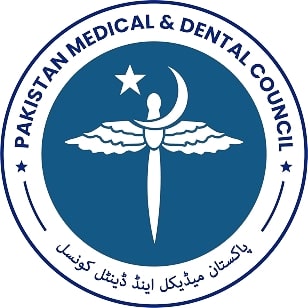AN AUDIT OF INCIDENCE, INDICATIONS AND COMPLICATIONS RATE FOR CAESEREAN HYSTERECTOMIES IN A TERTIRARY CARE HOSPITAL
DOI:
https://doi.org/10.59058/jaimc.v21i3.105Keywords:
Audit, Caesareanhysterectomy, Indications, FetomaternalcomplicationsAbstract
Objective: Analysis of all caesarean hysterectomies, performed in gynecology unit 1 during one
year period, to find out its rate of incidence, indications and its morbidity, one of the largest
specialized healthcare care public hospitals in Lahore.
Methods: A retrospective observational study was conducted in the department of gynecology
and obstetrics Unit I, Sir Ganga Ram hospital, Lahore from June 2019 till June, 2020 including
all women who underwent caesarean hysterectomy. Data was abstracted from the medical record
and was entered and analyzed in SPSS version 21.0. The outcome was presented as frequency
and percentages for incidence, indications and complications.
Results: During the study period total deliveries were 5804 with 2979 were delivered through
caesarean section out of which 64 women underwent caesarean hysterectomy, resulting in an
incidence of 2.1%. Placenta accreta was found to be the most common indication for cesarean
hysterectomy. There were 7.4% (02) maternal deaths.
Conclusion: The rate of caesarean hysterectomy has increased markedly over a period of 1 year.
Increased caesarean rate is in fact a leading factor which requires adequate attention to help
reduce maternal and fetal abnormality not only from caesarean hysterectomies but also from
other preventable complications. There is further need of multicenter research to see the reasons
for increase in caesarean section rate in our hospitals.
Caesarean hysterectomy also known by some as peripartum hysterectomy or obstetric
hysterectomy is a procedure done to save maternal life in uncontrollable hemorrhage and few
elective indications. It can be planned but more often it is an emergency operation. It has caused
substantial morbidity and mortality worldwide. The incidence in literature for emergency
hysterectomy is 0.01 to 0.05 % 5
. In the past most of them were done to prevent sepsis, atony and
post-partum blood loss but currently most of them are carried out in emergency to control
hemorrhage. Caesarean hysterectomy once considered to be a rare procedure is on rise because
of increase in the rate of caesarean delivery which has resulted in increases incidence of
abnormal placentation (placenta accrete spectrum)8
.
Placenta accreta spectrum originally known as morbidly adherent placenta refers to the degree of
pathological adherence of placenta, including placenta increta, placenta accrete and placenta
percreta. The most preferred hypothesis regarding the etiology of placenta accrete spectrum is
that a defect of endometrial-myometrial interface leads to the failure of normal decidualization in
the area of uterine scar, which allows abnormally deep placental anchoring villi and trophoblastic
infiltration1
. Maternal morbidity and mortality can occur because of severe and sometimes lifethreatening hemorrhage, which often requires blood transfusion and is more likely to end up in
hysterectomy at the time of delivery or during the post-partum period. There are multiple risk
factors for abnormal placentation. The most common factor being the previous caesarean section
and the rise in the incidence of placenta accrete spectrum is directly proportional to the number
of prior caesarean sections.
Studies of caesarean hysterectomy are mostly reviews collected over a period of years. The
surgical indications and techniques have improved over time. These studies can have limited
impact to modern techniques. The purpose of this analysis was to estimate the frequency of
caesarean hysterectomy, its indications and associated complications over a period of 1 year in
our hospital to get a recent idea about the trends and to highlight avoidable factors and suggest
means to develop health care services to improve maternal and fetal well-being.
Materials and methods:
It was a retrospective observational study over a period of 1 year starting from July 1st 2019 till
30th June, 2020 conducted in gynecology and obstetrics unit 1 of Sir Ganga ram hospital,
Lahore. Data was taken from the medical record of the hospital. The 64 cases of caesarean
hysterectomy were analyzed from the medical record of labor ward. the information extracted
from the case notes include age, parity, gestational age, risk factors, indications, feto-maternal
complications (need of blood transfusions, visceral injury, need of re laparotomy, wound
dehiscence, mortality). The data was entered and analyzed in SPSS version 21.0 and presented as
frequency and percentages. Rates were calculated for incidence of hysterectomy, indications and
complications.
Results;
Out of a total number of 5804 deliveries during the study period, 2979 women underwent
caesarean deliveries with 64 patients having caesarean hysterectomies. The overall caesarean
section rate was 51.3% and caesarean hysterectomy rate turned out to be 2.1% with ratio of 1:46
caesarean hysterectomy in patients undergoing caesarean section.
Out of the 64 cases analyzed, most of the cases 95.3% (61) occurred in women aged 35 years and
below while the remaining 3 occurred in patients above 35 years. The distribution of parity in
our sample showed 31.2% (20) were in Para 3 group, primigravida were 7.8% (05), multipara
(Para 2 to 4) was 85% (55) and the grand multipara had 6.2% (04). In gestational age
presentation, 35.9% (24) women presented at term and 55.71% (40) at preterm (between 28 and
36 weeks. Risk factors encountered. 92.0% (59) cases were associated with scarred uterus with
the major contribution coming from previous caesarean scar, The least contributor was previous
myomectomy scar (no case 0 %). Other risk factors like previous placenta previa were not
encountered. (Table no: 1). The most common indication for caesarean hysterectomy in
descending order were placenta accrete spectrum followed by uterine rupture and atony. Total
abdominal hysterectomy was performed in most of the cases. The mean operative time was 2.23
+ .54 hours and maternal length of stay in the hospital on average was 5.47 + 1.71 days most of
women received general anesthesia from the outset.
Acute blood loss requiring blood transfusion was the most common complication. Almost all
patients required whole blood transfusion. FFPs were required by 42.9% (48) patients. Iatrogenic
bladder injury occurred in 8 cases. There were 7.4% (02) maternal deaths among the 64 women.
One mortality was due to underlying cardiac condition of aortic stenosis. (Graph no:1). The other
was attributed to amniotic fluid embolism. Both were previous caesarean deliveries and primary
indication for hysterectomy in each case was placenta accreta. The fetal birth weights showed
that 40.6% (26) were of normal birth weight (> 2.5 kg) and 59.3% (38%) babies were of low
birth weight (< 2.5 kg). (Table no: 2)
Downloads
Published
How to Cite
Issue
Section
License
Copyright (c) 2023 Qurra Mehmud, Sadaf Zahra Syed, Rubina Mustafa, Sadiya Butt, Naheed akhter, Sofia Manzoor

This work is licensed under a Creative Commons Attribution 4.0 International License.
The articles published in this journal come under creative commons licence Attribution 4.0 International (CC BY 4.0) which allows to copy and redistribute the material in any medium or format Adapt — remix, transform, and build upon the material for any purpose, even commercially under following terms.
-
Attribution — You must give appropriate credit, provide a link to the license, and indicate if changes were made. You may do so in any reasonable manner, but not in any way that suggests the licensor endorses you or your use.
- No additional restrictions — You may not apply legal terms or technological measures that legally restrict others from doing anything the license permits.
The editorial board of the Journal strives hard for the authenticity and accuracy of the material published in the Journal. However, findings and statements are views of the authors and do not necessarily represent views of the Editorial Board. Many software like (Google Maps, Google Earth, Biorender (free version)) restricts the free distribution of materials prepared using these softwares. Therefore, authors are strongly advised to check the license/copyright information of the software used to prepare maps/images. In case of publication of copyright material, the correction will be published in one of the subsequent issues of the Journal, and the authors will bear the printing cost.










